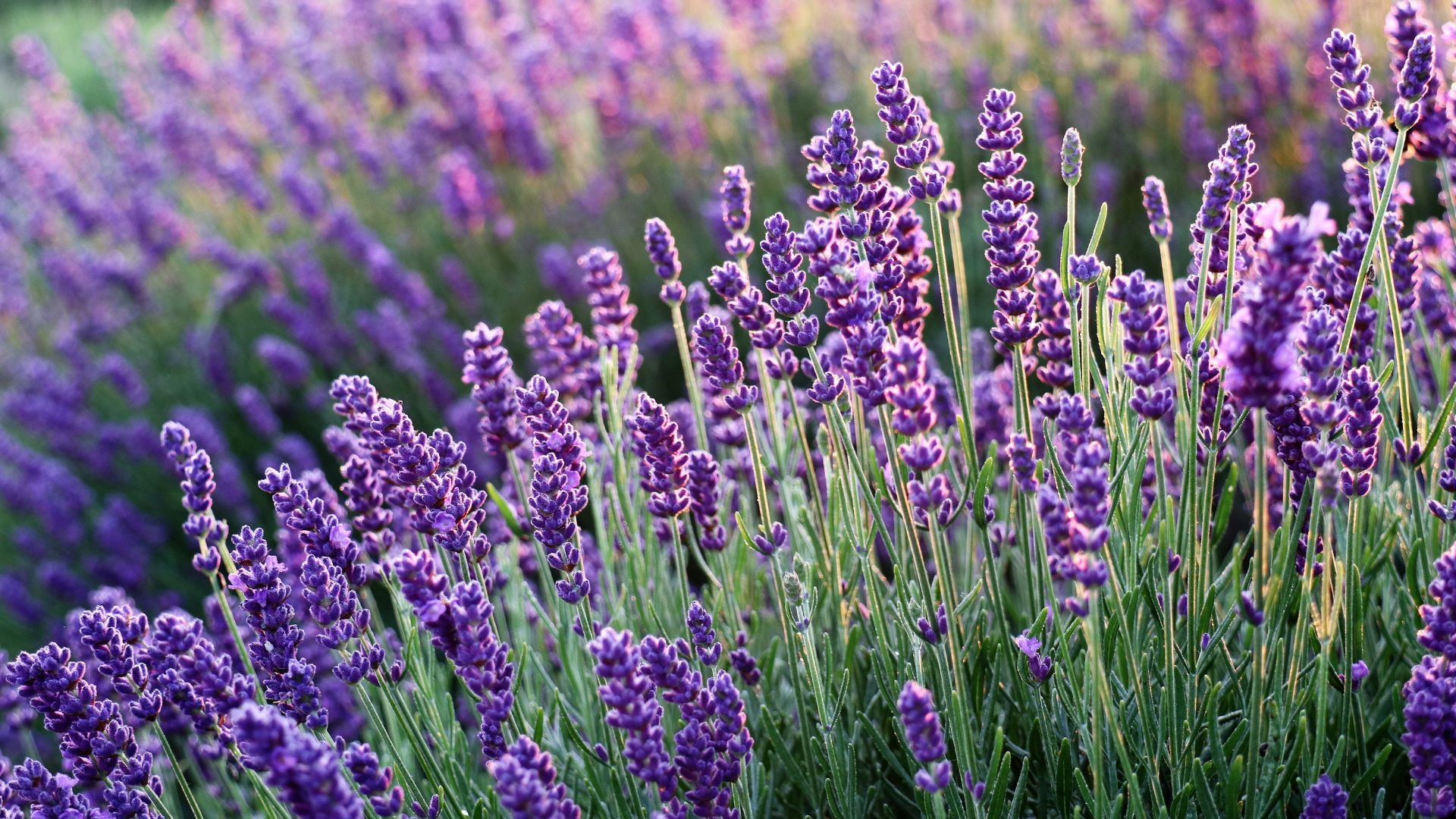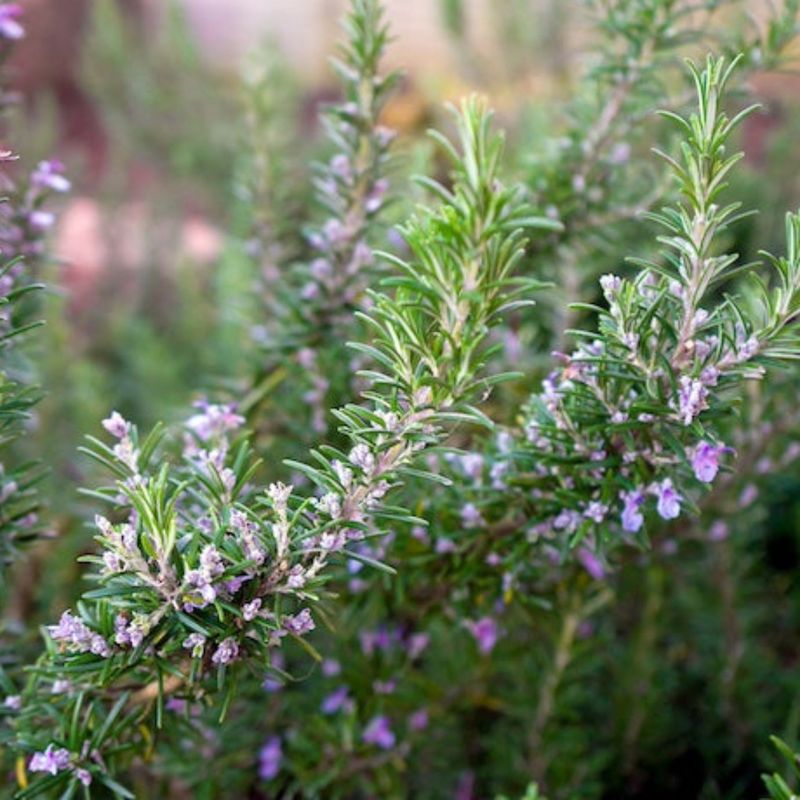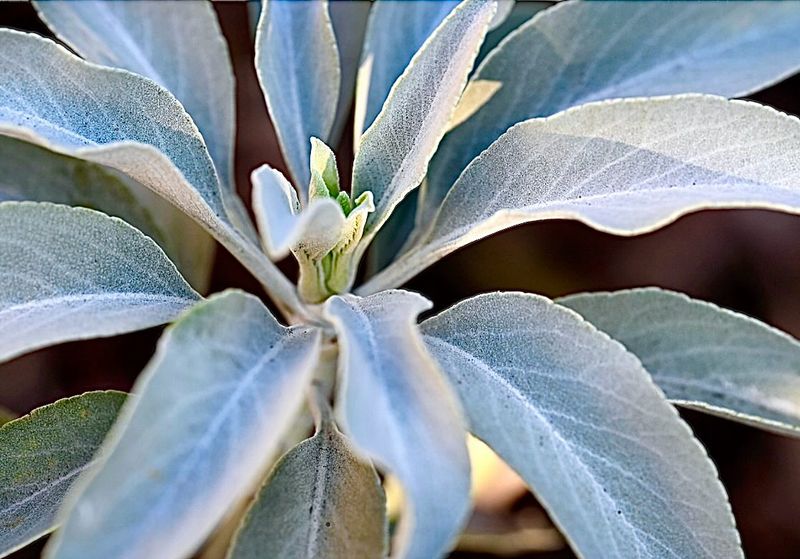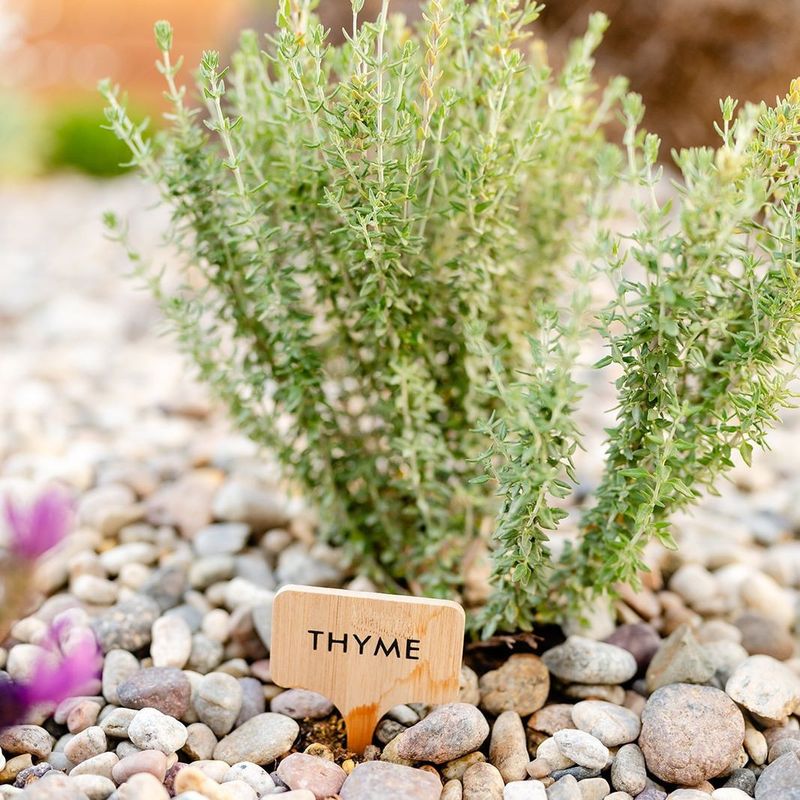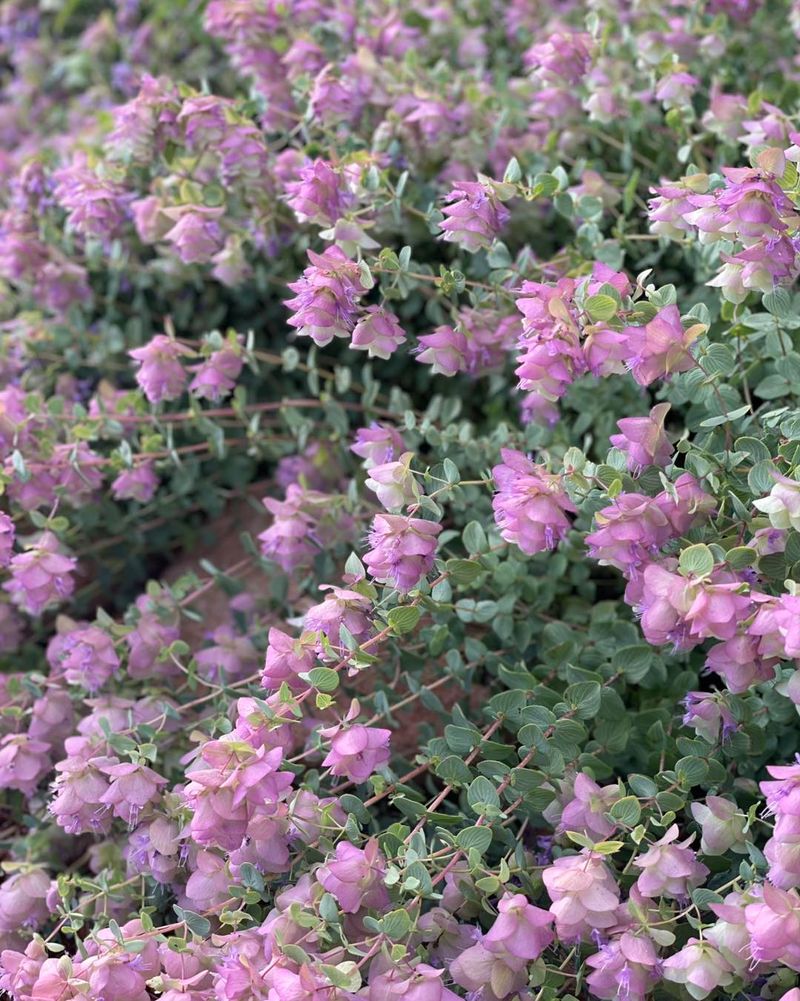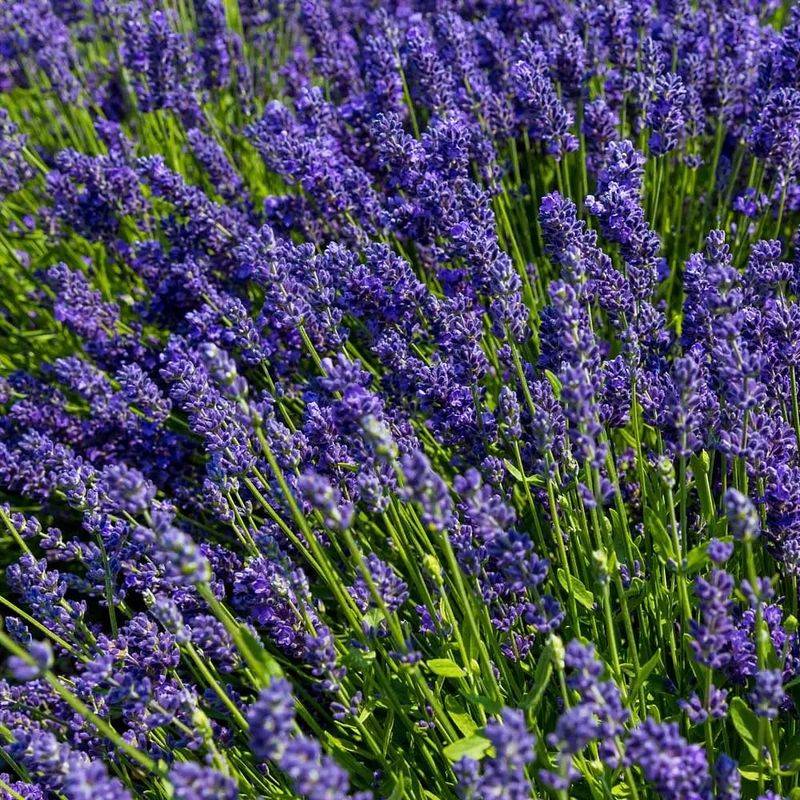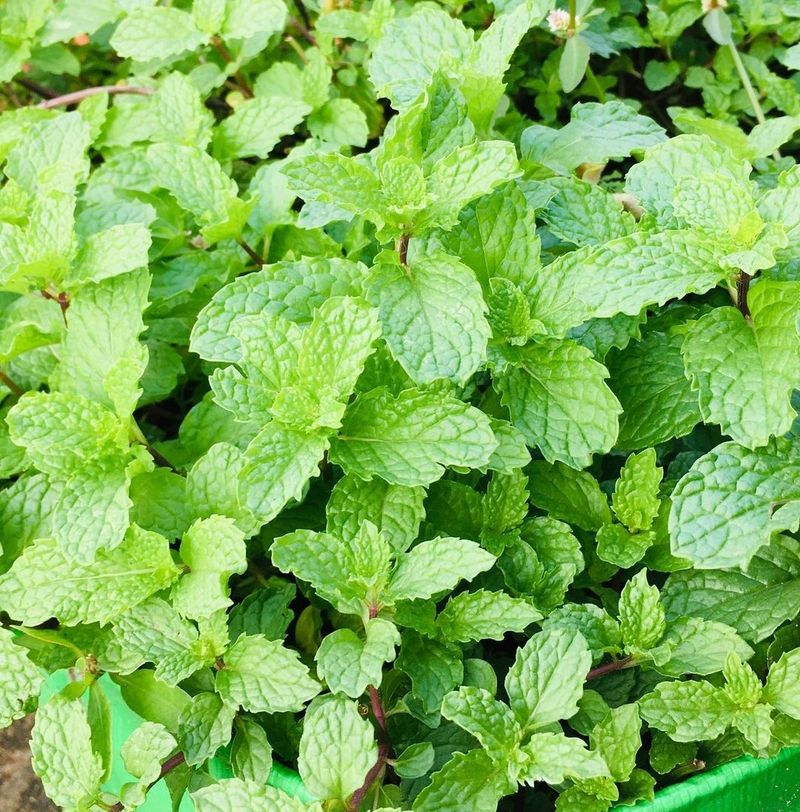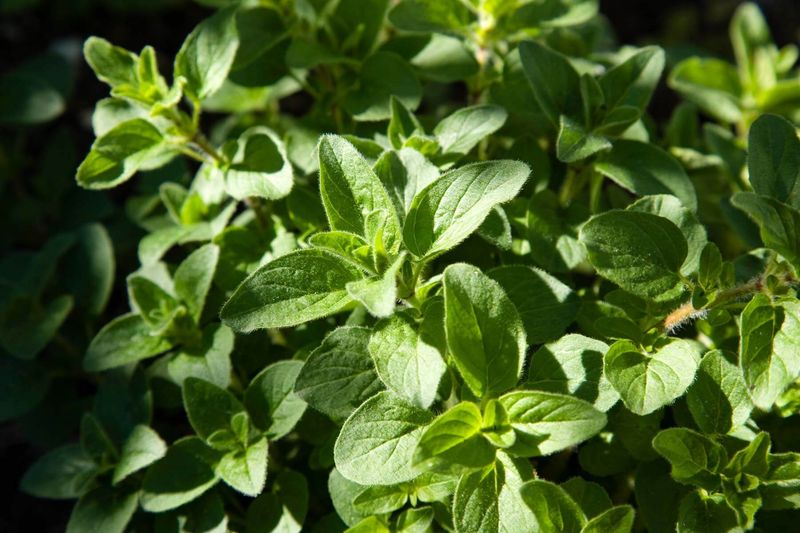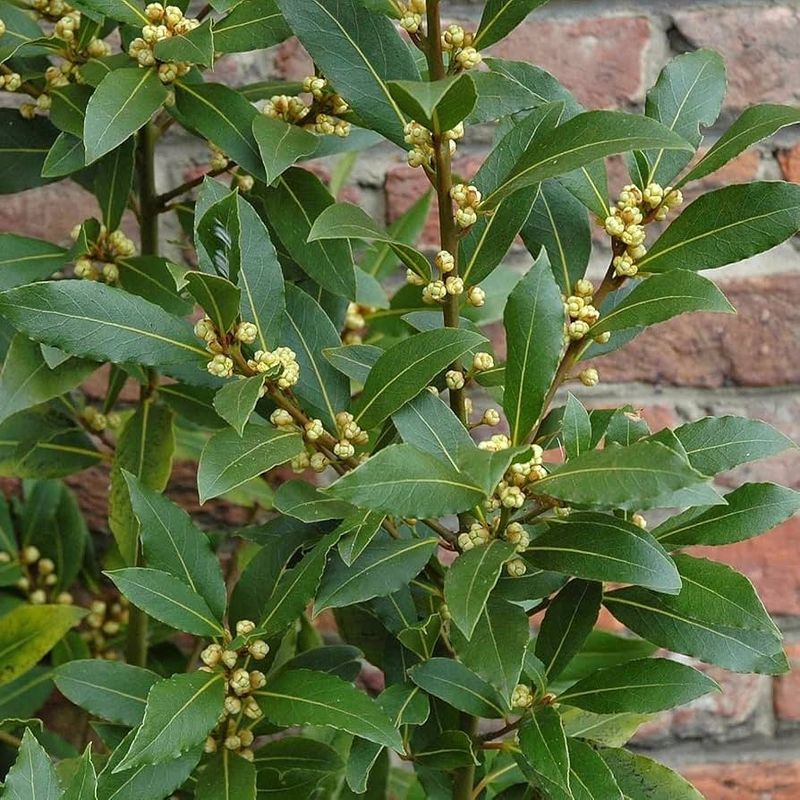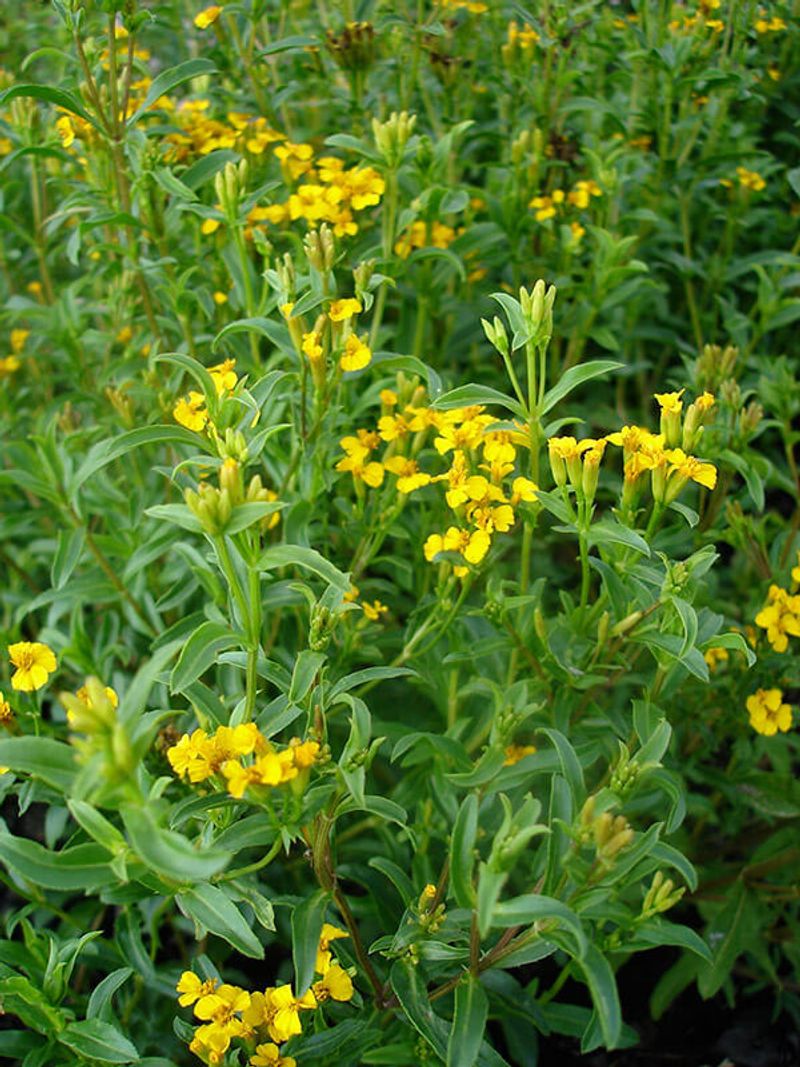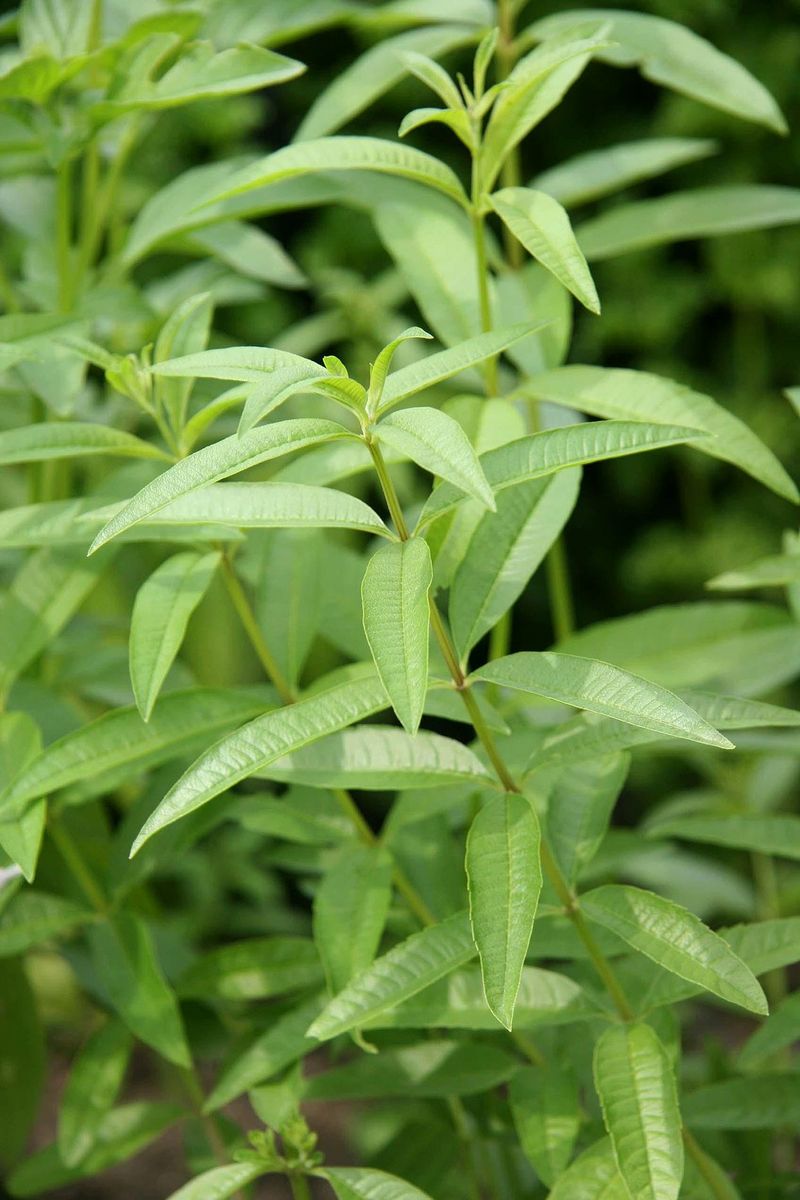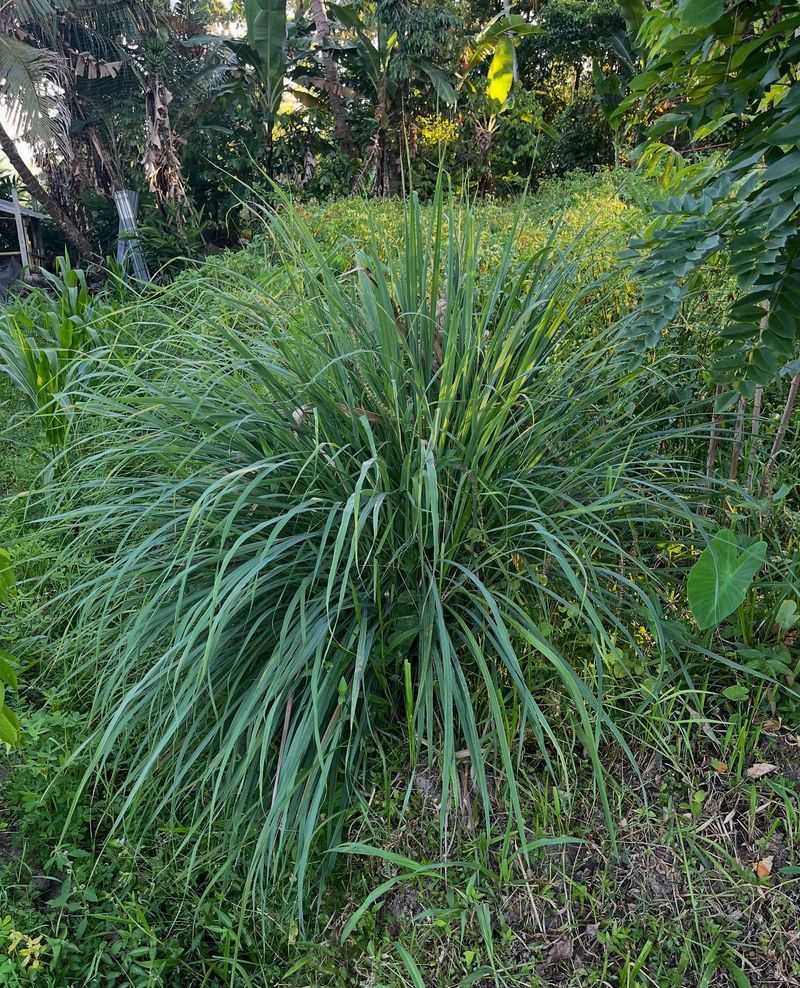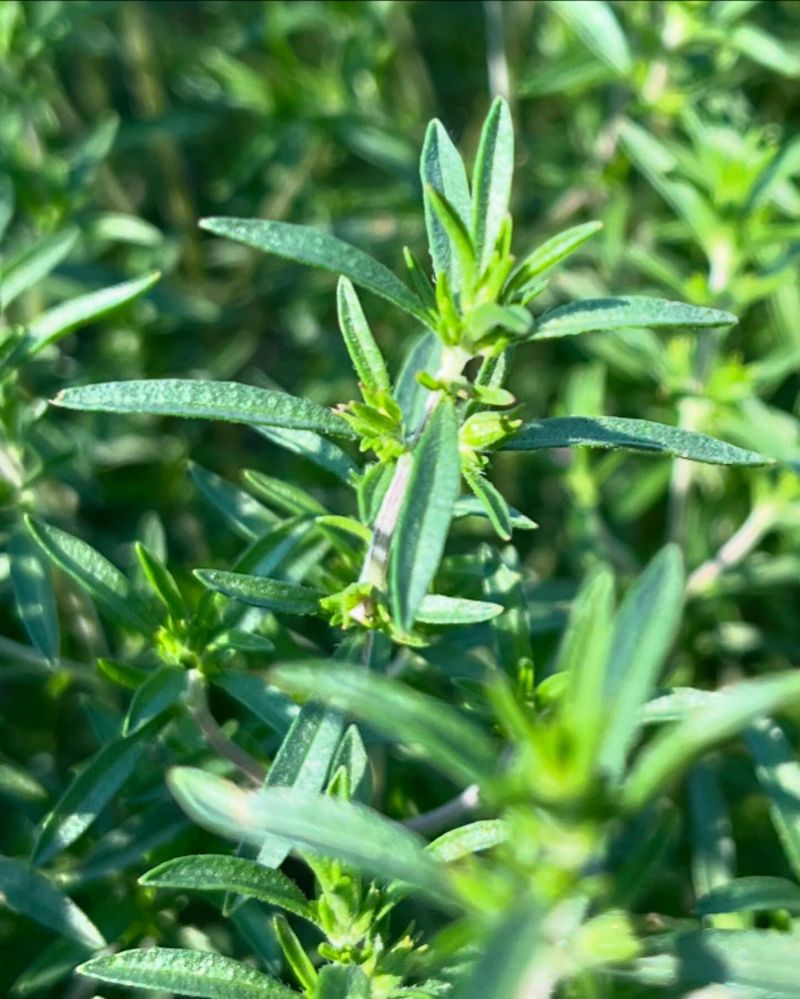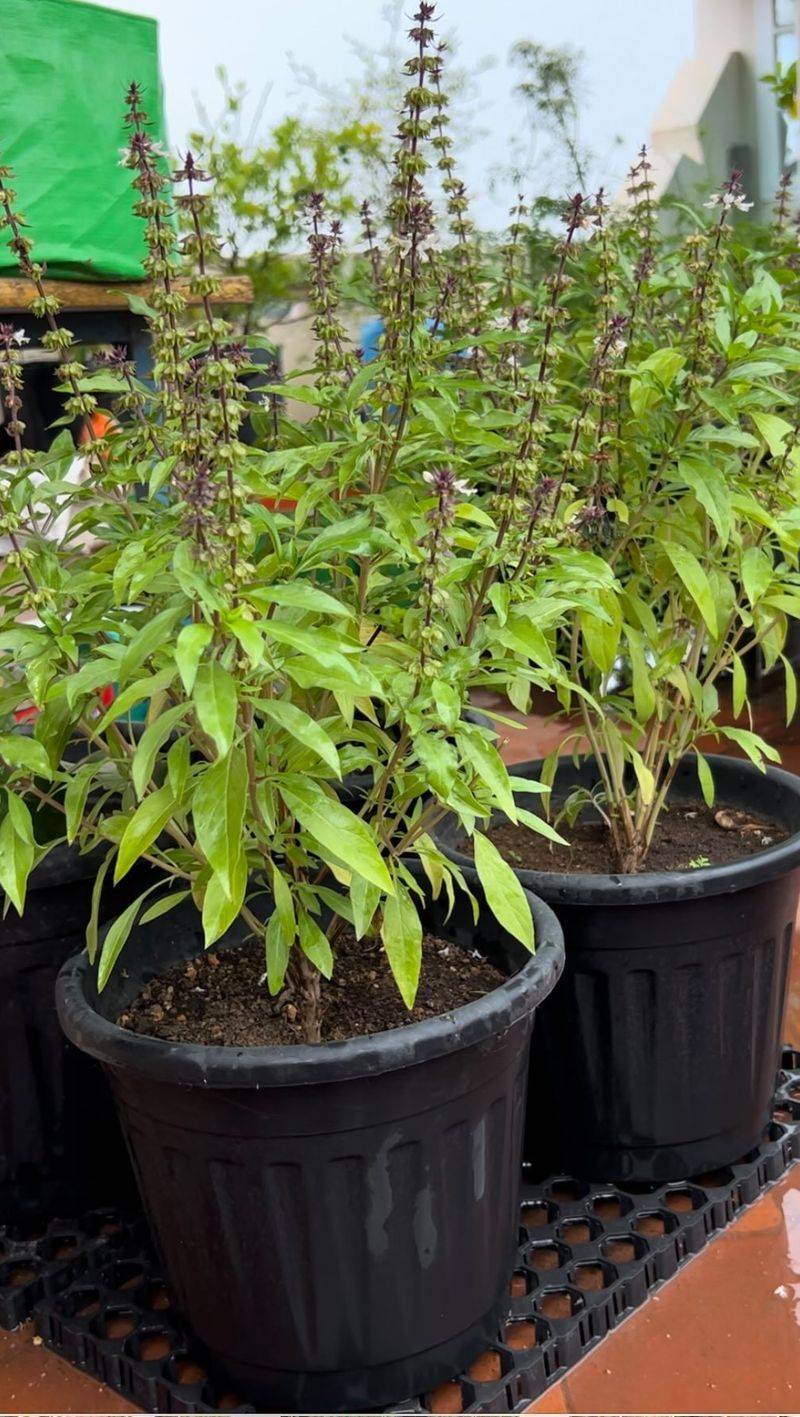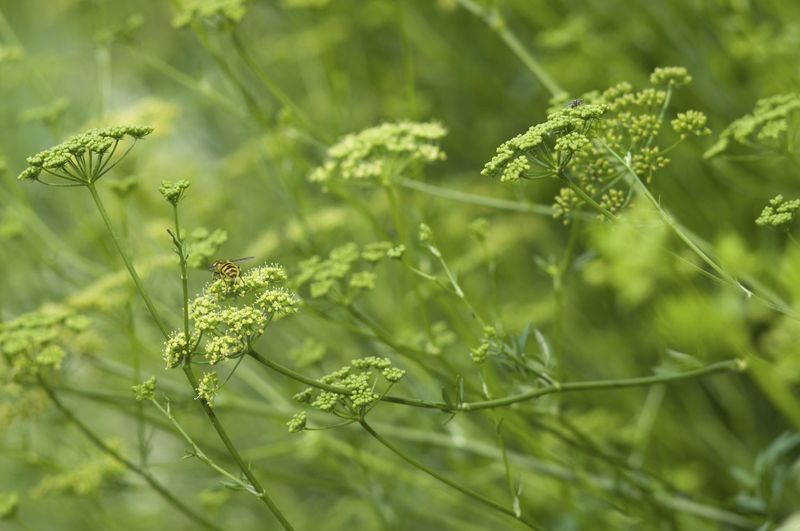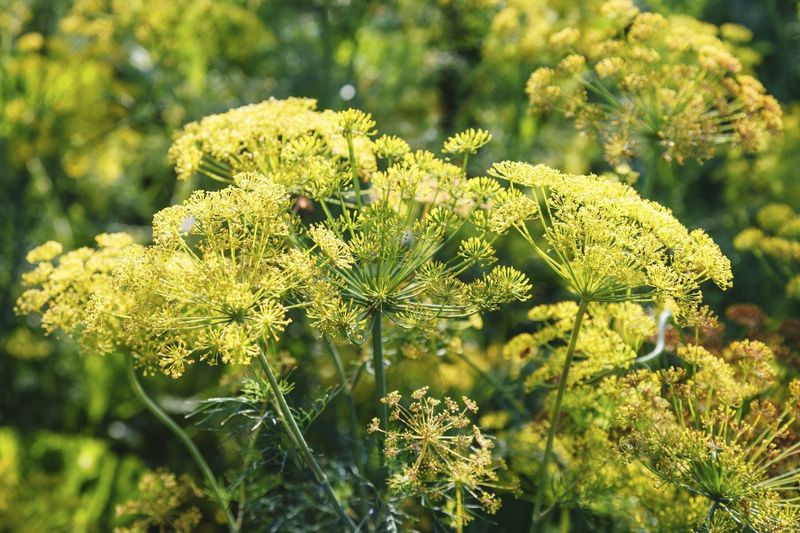Growing herbs during summer can feel like a gamble, especially when temperatures soar into the 90s. Last year, I watched my garden transform into a survival-of-the-fittest experiment when we had three straight weeks of heat waves.
What surprised me most wasn’t which herbs died—it was discovering how some actually seemed to thrive in conditions that had me hiding indoors with the AC blasting. These Mediterranean natives practically celebrate when the mercury rises, requiring almost no babysitting.
Not all herbs can take the heat, though. I’ve learned the hard way that some popular kitchen favorites will dramatically wilt no matter how much you water them when summer turns brutal.
1. Rosemary: The Desert Survivor
Native to the rocky Mediterranean coastlines, rosemary practically laughs at summer heat. I once forgot to water my rosemary plant for two weeks during a July heatwave, and it looked better than ever!
Its needle-like leaves have evolved to conserve water, and its woody stems store moisture for drought periods. The strong oils that give rosemary its distinctive fragrance actually help protect the plant from heat stress.
Plant it in well-draining soil, give it full sun, and rosemary will reward you with years of growth. Many varieties can even survive temperatures over 100°F without complaint.
2. Sage: Silvery Heat Champion
Those beautiful silver-gray leaves aren’t just for show—they’re sage’s natural sunscreen. The fuzzy texture and light color reflect sunlight instead of absorbing it, keeping the plant naturally cool even when temperatures climb.
My garden sage has outlasted every other herb during heat waves. It actually develops more intense flavor when grown in hot, dry conditions, making summer harvests especially aromatic.
Give sage sandy, well-draining soil and avoid overwatering. This herb actually prefers to dry out between waterings and will rot if kept too wet during hot weather.
3. Thyme: Tiny Leaves, Mighty Resistance
Don’t let thyme’s delicate appearance fool you. This herb is surprisingly tough when temperatures climb! Its tiny leaves minimize water loss, while its naturally spreading habit creates self-shading that protects roots from overheating.
I’ve watched thyme flourish in spots where the soil surface temperature must have reached 120°F. The hotter it gets, the more concentrated its essential oils become, intensifying that signature thyme flavor.
Plant it between stepping stones or in rock gardens where heat reflects and intensifies. Just provide good drainage and occasional water during extended dry spells.
4. Oregano: Heat Makes It Happier
Oregano doesn’t just tolerate heat—it actually improves with it! During one particularly scorching summer, my oregano developed such intense flavor that I had to use half my normal amount in recipes.
The secret lies in its Mediterranean heritage. Those hot, dry hillsides of Greece and Italy programmed oregano to release more essential oils as temperatures rise, which serves as the plant’s natural cooling system.
Give oregano full sun, well-draining soil, and minimal water. Too much moisture is actually more likely to kill it than heat. When it flowers in mid-summer, pollinators will flock to your garden despite the heat.
5. Lavender: The Drought-Defying Beauty
Those gorgeous purple spikes aren’t just for show—lavender is engineered for heat survival. Its silvery foliage reflects sunlight while its deep roots search for water far below the surface. The strong scent we love actually helps the plant retain moisture.
My French lavender sailed through 100-degree days while other plants wilted. The key is proper planting: lavender hates wet feet and humidity more than heat.
Give it sandy, alkaline soil with excellent drainage. Skip the mulch (it creates humidity) and water deeply but infrequently. In extreme heat, lavender might look a bit dusty but will recover quickly once temperatures moderate.
6. Mint: Surprising Summer Survivor
Mint has a secret weapon against heat: those aggressive, far-reaching roots that gardeners often curse are actually its survival strategy. While the top growth might look stressed during heat waves, the root system keeps finding moisture.
I’ve watched mint bounce back from seemingly dead brown stems after a week of triple-digit temperatures. The trick is providing afternoon shade in the hottest climates. Morning sun provides enough light for flavor development without cooking the leaves.
Plant mint in containers to control spreading, and water consistently but not excessively. A layer of light-colored mulch helps keep roots cool while still allowing airflow around the crown.
7. Marjoram: Oregano’s Gentler Cousin
Often overshadowed by its more famous relative oregano, marjoram deserves recognition for its impressive heat tolerance. Its soft, gray-green leaves might look delicate, but they’re designed to minimize water loss in hot conditions.
My marjoram plants have consistently outperformed basil and parsley during heat waves. The flavor actually improves and intensifies in hot weather, developing sweeter notes that make it perfect for summer cooking.
Plant marjoram in well-draining soil and full sun. It appreciates regular watering but can recover quickly from drought. In the hottest regions, a bit of afternoon shade extends the harvest season without sacrificing flavor.
8. Bay Laurel: Ancient Heat Warrior
The ancient Greeks crowned their heroes with bay laurel wreaths for good reason—this plant is a survivor! Its thick, leathery leaves have a waxy coating that prevents water loss during heat waves.
My potted bay has weathered summer temperatures exceeding 95°F without complaint. The leaves actually produce more aromatic oils during hot weather, making summer-harvested bay leaves especially flavorful in soups and stews.
Grow bay in a large container with well-draining soil. It can handle full sun but appreciates afternoon shade in the hottest climates. Water deeply when the top inch of soil dries out, and your bay will thrive for decades.
9. Mexican Tarragon: Heat-Loving Alternative
When French tarragon wilts in summer heat, Mexican tarragon steps in with attitude. This marigold relative produces nearly identical anise-like flavor but thrives when temperatures soar.
I discovered Mexican tarragon after losing French tarragon three summers in a row. Not only does it handle heat beautifully, but it also produces pretty yellow flowers that attract butterflies to the garden.
Plant it in average garden soil with good drainage and full sun. Unlike many herbs, it actually enjoys a bit of fertility, so don’t be afraid to add compost. Water when the soil feels dry an inch down, and watch it flourish right through August.
10. Lemon Verbena: Citrus Scent That Beats The Heat
The intense lemony fragrance that makes lemon verbena so beloved also helps it survive summer heat. Those aromatic oils create a cooling effect around the leaves, like nature’s air conditioning system.
My lemon verbena reaches its peak during the hottest weeks of summer. The leaves grow larger and more fragrant just when other herbs start to fade. Its deep root system helps it find moisture even when the surface soil dries out.
Grow lemon verbena in well-draining soil enriched with compost. It enjoys full sun but benefits from afternoon shade in the hottest climates. Regular harvesting encourages bushier growth and prevents legginess.
11. Lemongrass: Tropical Heat Master
Coming from Southeast Asia, lemongrass practically begs for hot weather. Those tall, arching blades aren’t just ornamental—they’re designed to channel even the slightest breeze to cool the plant’s core.
I’ve watched my lemongrass double in size during heat waves that decimated other herbs. The citrusy aroma intensifies in hot weather, making summer harvests especially flavorful for Thai curries and teas.
Plant lemongrass in rich, well-draining soil with consistent moisture. Unlike many heat-tolerant herbs, it doesn’t mind regular watering as long as it doesn’t sit in soggy conditions. In cooler climates, grow it in containers to bring indoors for winter.
12. Summer Savory: The Forgotten Heat Hero
This underappreciated herb deserves more garden space! Summer savory (aptly named) produces the most flavorful leaves during the hottest months when many herbs struggle.
I started growing summer savory after a chef friend recommended it, and it’s now my go-to herb in July and August. Its peppery, slightly pine-like flavor intensifies in heat, making it perfect for grilled vegetables and meats.
Give summer savory well-draining soil and full sun. It’s an annual that self-seeds readily, so let a few plants flower at season’s end. Water only when the soil feels dry about an inch down to prevent root rot.
13. Chives: Quiet Heat Persistence
Chives might not be the first herb you think of for heat tolerance, but these onion relatives have surprising staying power when temperatures climb. Their hollow, tubular leaves actually help regulate temperature and minimize water loss.
My chives slow down during intense heat but never completely stop producing. They might look a bit less perky during a heat wave, but a quick trim and extra water bring them right back.
Plant chives in rich, well-draining soil where they’ll receive morning sun but some afternoon shade in hot climates. They appreciate consistent moisture but can recover from short dry spells. Divide clumps every few years to maintain vigor.
14. Basil: The Heat-Loving Annual
Basil often gets a bad rap for bolting quickly, but with the right care, it’s actually one of summer’s star performers. Those big, tender leaves that wilt dramatically are just showing you they need a drink—they bounce back remarkably fast.
I’ve found that regular harvesting is the key to keeping basil productive through heat waves. Pinching off flower buds immediately channels energy back to leaf production instead of seed formation.
Plant basil after all danger of frost has passed in rich, well-draining soil. Water consistently, aiming for the base of the plant to avoid splashing the leaves. Morning watering prevents fungal issues in hot, humid climates.
15. Parsley: Wilts When Hot
Despite its reputation as an easy herb, parsley struggles when temperatures consistently climb above 85°F. Its shallow root system can’t access deep moisture, causing those feathery leaves to quickly droop in hot weather.
I’ve tried growing parsley in summer for years with mixed results. Even with regular watering, high temperatures trigger it to bolt (produce flowers and seeds), turning the leaves bitter and less productive.
If you must grow parsley in summer, choose a spot with morning sun and afternoon shade. Apply a light-colored mulch to keep roots cool, and water deeply every other day during heat waves. Better yet, grow it as a fall and spring crop instead.
16. Cilantro: Summer’s Most Reluctant Herb
No amount of gardening skill will keep cilantro happy when temperatures consistently exceed 80°F. This cool-season herb is genetically programmed to bolt (produce flowers and seeds) when days get long and hot.
I’ve tried every trick—shade cloth, frequent watering, special varieties—but summer cilantro inevitably races to produce coriander seeds within weeks. The good news? Those seeds can be harvested for cooking or saved for fall planting.
If you crave fresh cilantro in summer, try succession planting in a partly shaded location. Sow new seeds every 2-3 weeks, harvest while plants are young, and accept that each planting will be short-lived during hot weather.
17. Dill: The Heat Bolter
Those feathery dill fronds that look so delicate actually hint at this herb’s heat sensitivity. When temperatures climb, dill rapidly shifts from leaf production to flowering, often seeming to go from seedling to seed head in just weeks.
I’ve found dill particularly frustrating during summer canning season, when I need it most for pickles. By July, most plants have bolted, with sparse foliage and lots of yellow flower umbels.
For summer dill success, provide afternoon shade and consistent moisture. Succession planting every 2-3 weeks ensures a steady supply of young plants. Alternatively, harvest and freeze dill in spring, or grow it as a fall crop when temperatures moderate.

